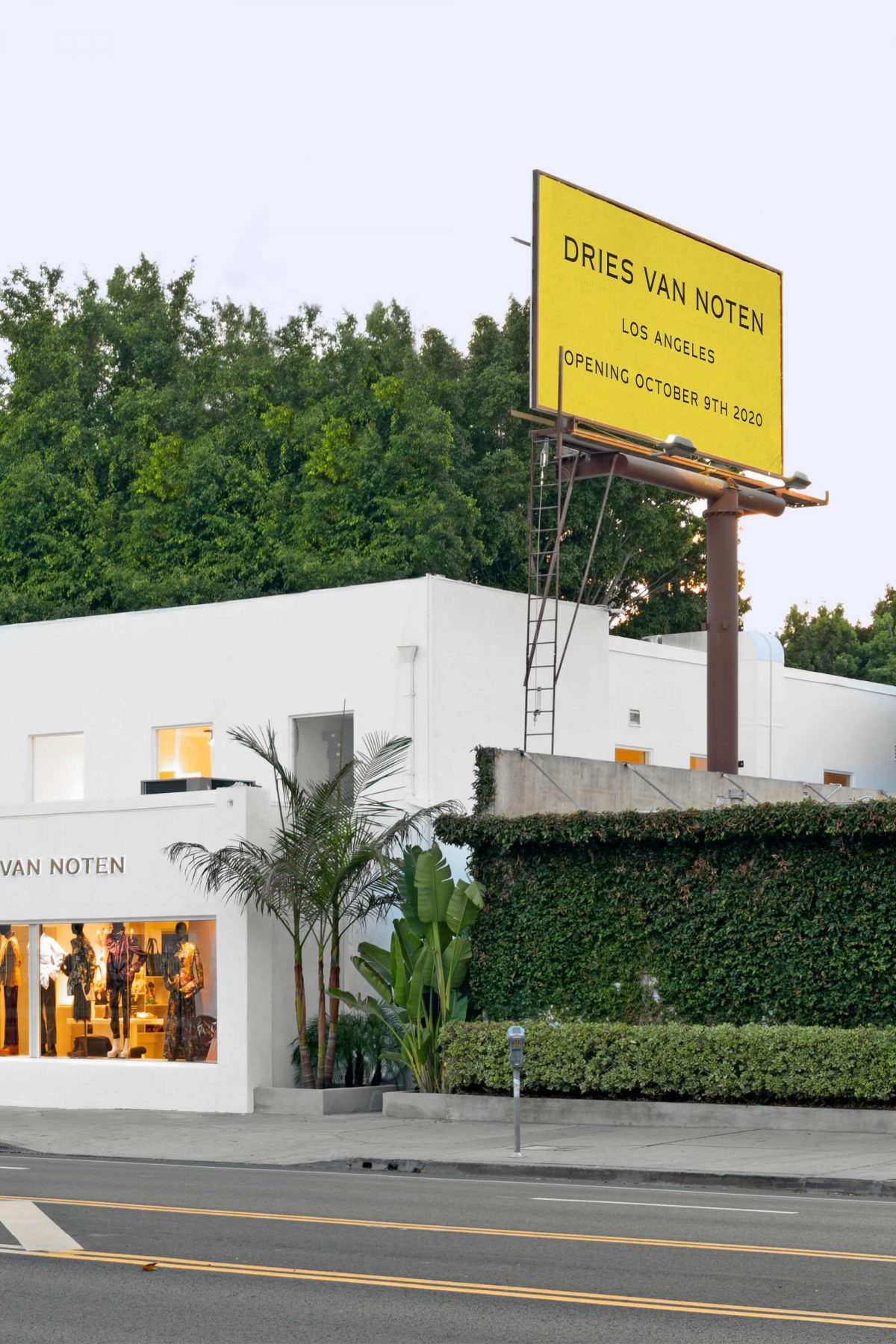The Belgian brand is opening its biggest store yet in Los Angeles, after the opening of a freestanding boutique in Shanghai in September.
The Covid-19 pandemic may have rattled the global fashion industry, but that hasn’t stopped discreet Belgian luxury designer Dries Van Noten from investing more into physical retail.
The designer, one of the original Antwerp Six who started his namesake label in 1986 and helped place Belgium on the fashion map with his avant-garde clothing, artistry and prints, is opening his first standalone US store tomorrow. The 8,500-square-foot Los Angeles boutique, its largest so far, will be the brand’s seventh standalone store joining flagships in Antwerp, Paris, Singapore, Hong Kong and its new Shanghai store at the Réel Mall opened just over a month ago. The brand is stocked in around 500 stores globally.
“It’s quite strange to say that you are opening a bricks-and-mortar store in the middle of the Covid crisis,” admits Van Noten on a Zoom call from his Paris office. “It is an opportunity to think about what a bricks-and-mortar store has to look like during, and especially, after the Covid crisis.”
Dries Van Noten has often worked outside the fashion system, eschewing traditional print advertising, avoiding pre-collections like cruise by showing twice a year in Paris and joining the call for change in May with Lane Crawford’s Andrew Keith and Altuzarra’s Shira Sue Carmi advocating a more timely fashion calendar and a slower pace. He was independent until 2018, when fragrance and fashion conglomerate Puig acquired the brand for an undisclosed sum. (They declined to give annual revenues figures.)
Opening a store also goes against the tide of bankruptcies and store closuresdominating the US retail market. But Spanish group Puig, which also owns Carolina Herrera, Nina Ricci and Paco Rabanne, is following a playbook that has been adopted by many conglomerates looking to grow an independent brand’s business: expanding the brand’s direct-to-consumer footprint and developing cash-generating categories like accessories and fragrances. The gamble is whether or not the same playbook will be as effective in a post-pandemic world.
© Jim Mangan

According to Van Noten, the opening of the Los Angeles store, located on La Cienega Boulevard, will operate differently to meet the changing consumer needs. Art exhibitions, performances, music, film screenings and workshops in addition to the fashion and accessories collections are all planned in the new store.
“The idea is for it to be a very open space for creativity,” he says. “You don’t always have to come to the store to buy garments, you can also come to discover something about food, art, music and other beautiful things.”
The store is also an opportunity to recoup Van Noten’s clientele in Los Angeles, where two of the designer’s stockists, Opening Ceremony and Barneys Beverly Hills, permanently closed back to back in the early months of this year. Dries Van Noten will take over the previous Opening Ceremony space, a decision made at the end of March. “Of course we know there is a base,” says Van Noten. “The moment I heard that they were closing down, we started to think that that would be an opportunity.”
Developing a direct-to-consumer distribution network can create a virtuous circle of productivity by reducing a brand’s exposure to wholesale and improving gross and net margin, explains Francesca Di Pasquantonio, head of luxury goods equity research at Deutsche Bank. But it also often unbalances the cost structure of small to medium brands, increasing fixed costs and putting pressure on the return on capital. “Network expansion must be done in a cautious way,” she says.
Dries Van Noten’s traditionally extremely selective distribution choices have been beneficial for the brand, says Robert Burke, founder of consulting firm Robert Burke Associates. Both Shanghai and Los Angeles openings, opened under Puig ownership, are “very smart moves”, targeting locations where the brand already has a strong following. “Once the brand has a store we always see sales go up in that market and online,” he says, adding that the chosen location will draw customers from all over the Los Angeles area.
Brands are increasingly treating stores as marketing and brand awareness operations, as opposed to places exclusively dedicated to transactions, according to Di Pasquantonio. A store in a place like Los Angeles, she says, can function as a “shop window” that can be used for trunk shows, cocktail parties, exhibitions and private sales once the coronavirus situation normalises. “It’s a way of clienteling, engaging your customers in the long term and giving them reasons to come back in store,” she says.
The LA shop will also include two archive rooms, one for womenswear and one for menswear, featuring pieces from the 1990s to last season’s collaboration collection with Christian Lacroix. At the moment the pieces all come from the designer’s archive but, depending on limitations imposed by the pandemic, Van Noten plans to allow his Los Angeles customers to bring their own Dries Van Noten pre-loved pieces to sell in the store in the future.
Van Noten doesn’t exclude the possibility of more openings in the near future, but he’s taking the Los Angeles store as a unique space to experiment a new approach to retail. “We are always looking for opportunities, so I won’t say no to things, but we don’t want to make a duplicate of this space,” he says.

